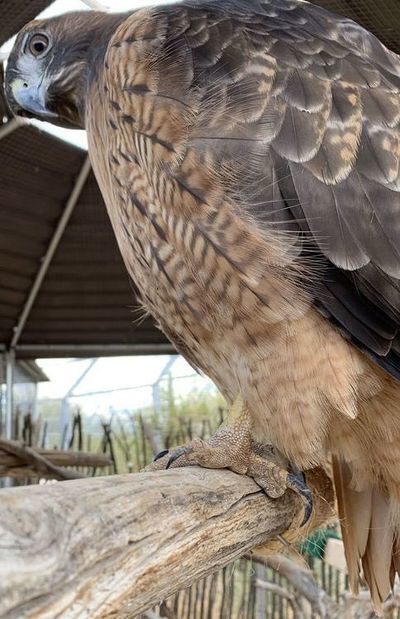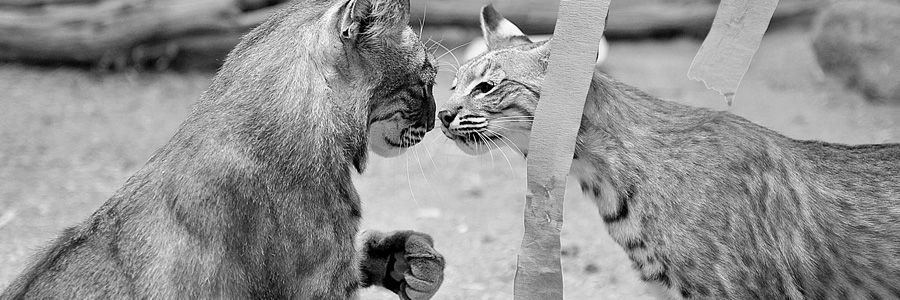HAWK

Red Tailed Hawk, Buteo jamaicensis
- Habitat: Open fields especially near woodlands, grasslands, marsh-shrub, and urban areas
- Status: Least concern
- Population Trend: Increasing
- Diet: These carnivorous birds eat small mammals, birds, rabbits, lizards, snakes, and more
- Weight: 1.5 - 3.5 lbs.
- Height: 18" - 26" body; 43" - 55" wingspan
- Lifespan: 6 - 10 years in the wild; 25 - 35 years in human care
- Interesting Facts:
- The red-tailed hawk is one of the few birds capable of “kiting,” holding still against the wind on set wings, much like a kite tugging against a string.
- Red Tailed Hawks are the most common large hawk that can be found in every U.S state and almost all habitats.
- Red Tailed Hawks have 8 times better eyesight than humans.

Photo by Derek Sterling
Harris Hawk, Parabuteo unicinctus
- Habitat: Sparse woodland, semi-desert as well as some marshes
- Status: Least concern
- Population Trend: Stable
- Diet: These carnivorous birds eat small mammals, birds, rabbits, lizards, snakes, and more
- Weight: Males are 1.5 lbs, Females are larger at around 2 lbs.
- Height: 18" - 23" body; 41" - 47" wingspan
- Lifespan: 10 - 12 years in the wild; 20- 25 years in human care
- Wild population in Arizona: Unspecified
- In the Southwest Wildlife Sanctuary: 1
- Interesting Facts:
- Harris’s hawks are the only birds of prey that hunt in groups. Such unique behavior has earned them the nickname “wolves of the sky.”
- Harris's hawks practice a behavior known as "back-standing". Several birds will stand on top of each other.
- Harris’s Hawks remember everything and so they learn how to capitalize and how to use people in assisting them in their abilities to hunt and catch food for themselves. They are considered to be one of the smartest birds of prey.


